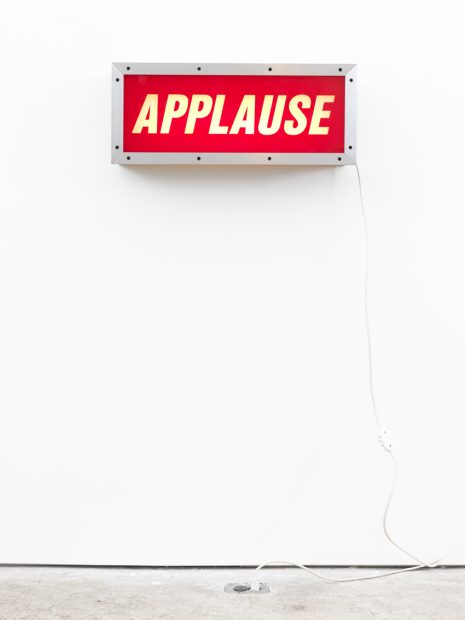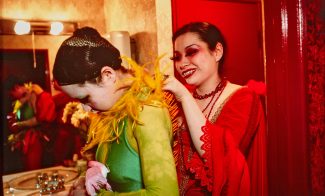Nan Goldin and Jack Pierson were part of the “Boston School”—a group of loosely affiliated artists who met in Boston in the late 1970s and 80s and focused much of their work on the queer underground scene in and around the city. At the time, photography was a powerful form of documentation in an era shaped by the AIDS pandemic. Two works from the ICA’s permanent collection installed together on the third floor point to the artists’ shared interest in performance and its emotional capacities.
Goldin attended School of the Museum of Fine Arts (1974–78) and has spent decades capturing overlooked subjects and the intimacies of everyday life. In 1994, Goldin published Tokyo Love together with Japanese photographer Nobuyoshi Araki. An artist book documenting contemporary adolescence in Tokyo, the book celebrates youthful energy and romance as well as the subjects’ fluid sexuality and gender identities during a period of government-imposed censorship. Noa Dressing for the Venus Show at Shogun Club, Tokyo is a portrait of two performers preparing for the stage as one fastens the other’s costume. The name Shogun Club references a queer history of Shoguns—top military commanders in feudal Japan—who often brought beautiful young men as Geishas for entertainment during wartime. The necessity of queer kinship and care is foregrounded here and across Goldin’s work.
A graduate of the Massachusetts College of Art in 1984, Pierson is known for his photographs, sculptures, and text-based artworks that often draw on commercial signage and popular culture to explore nostalgia, desire, and disillusion. Applause is a re-creation of the sign used in television studios that, when lit, directs audiences to clap at pre-determined moments during tapings of a program. A kind of instructional device, Applause is a work of irony—drawing attention to the gulf between what one says and means. Pierson’s sculpture encourages viewers to question our emotional reactions to signs and signals.


